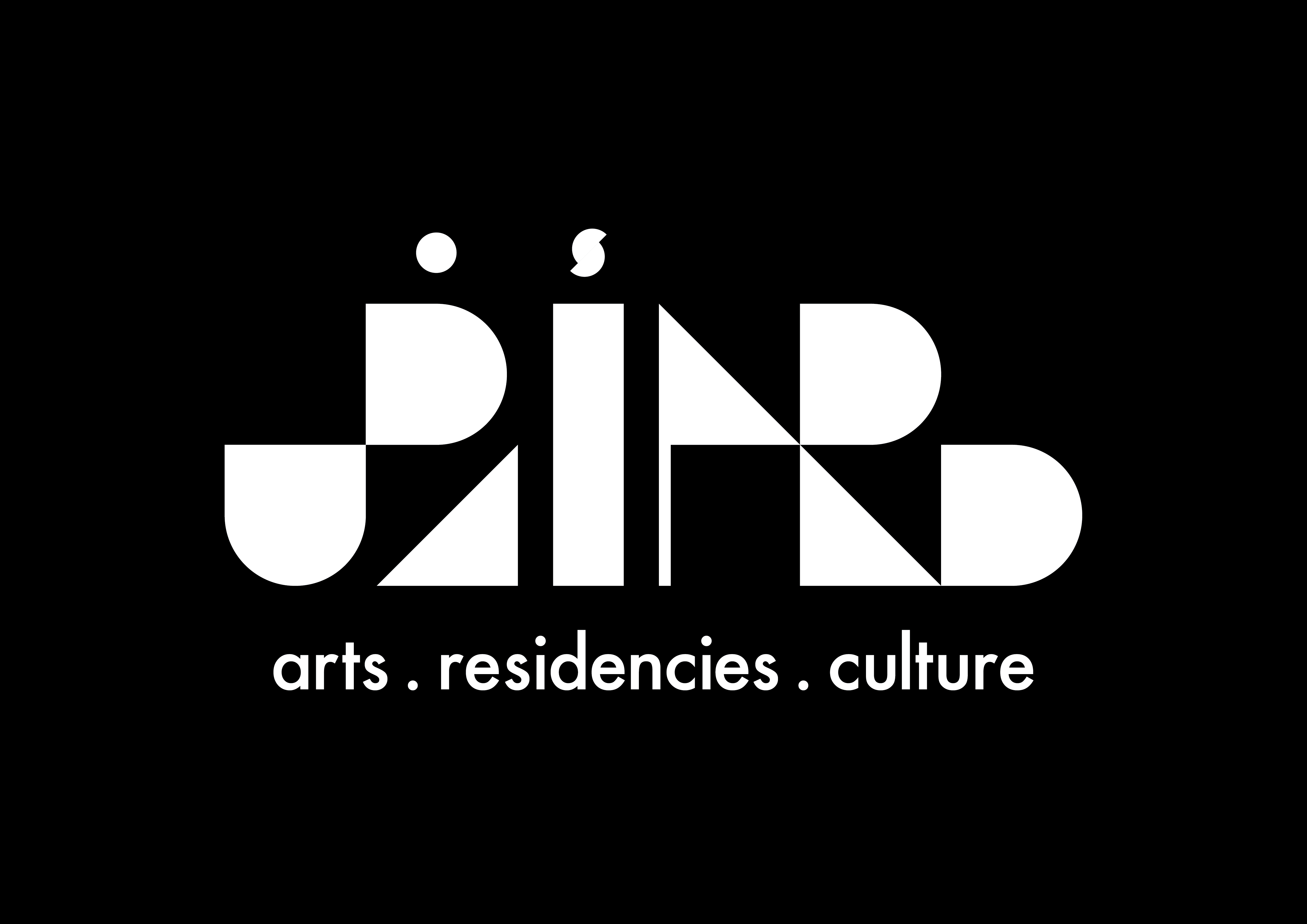Yet not Finished / Lis-a-ma hel-sitch
Solo Exhibition by Georgina Sleap, curated by Farida Youssef
11.12.2024 - 12.12.2024
Between Making and Being
Making as Dealing. What counts as a reason for making something? Looking at Jackson Pollock’s paintings, one sees its making, the splashing of paint, the decisions taken by this corporeality. Making is a humble approach to uncertainty. Doubt never went away with repeated ruminations. Rather than deny it, making engages trouble. The body becomes a reason for doing. Remember Just do it!
Anatomy of Form. ‘Holding space for someone’ is a curious English expression. It means to allow others to express themselves without judgment. Taken literally, it creates a quibble of a mental image. Think of it as a sketch for a sculpture. As though one were drawing the shape or form of someone’s existence. To follow this a step further, if one wanted to hold their own space, they’d be making their own sculpture. It would be based on their body which is now the sculpture’s measure and form. And so, an immaterial space becomes material.
Integrity. One way that a sculpture exists is that it becomes an instance of condensation. Matter is coagulated to fill a void. As if that matter persists. Spinoza wrote that ‘each thing, as far as it lies in itself, strives to preserve in its being.’ (Ethics, III.prop 6).
He called this Conatus, Latin for striving. Papier-mâché is a material that perseveres in being papier-mâché until it gives us Embrace. More than inertia, these sculptures could exist indefinitely, lest they be disturbed by an outside force. There is also a perseverance in Faggala where all this material came from. A persistence through time and space. Workshops that have existed in the same location for generations. To think that glass has been blown here and paper made there for decades. The Faggala Conatus.
A Body of Perception. If I am not going to use facts to tell you that this space is five by four meters or that maybe there’s a window on your left, how else could I describe it to you? Space affords our bodies opportunities for movement and emotion. The body becomes the key to perception, like a legend on a map. You can read a space through it. The body will tell you it feels the expanse, how well it roams within it. It might say something about eye squinting when the sunlight enters. Now you know the space is big, airy and roomy. In fact, in German, room and space share the same word, Raum. Space is room, space is life.
Being in the World. Drawing is a commitment. The drawing of a tree is a commitment to each of its branches. If you follow the lines in the drawing, you’ll see how the artist builds the angles of those branches. Each line recreates its context. Slowly, it becomes a tree of infinite expandability. What we find in turn is an intense appreciation of life. It’s not about observing a tree. Rather, there lies the intention of being embedded in the world of the tree. To steer away from what you know, to really look at the tree. Then you might realise that the flame tree is alive.
Empathy. I have faith in those forms. I cannot disengage. It’s in the quietness of thought that things happen.
A conversation with rana elnemr, Farida Youssef and Georgina Sleap
A conversation around “Yet Not Finished / Lis-a-ma hel-sitch” exhibition with rana elnemr, Farida Youssef and Georgina Sleap. Georgina Sleap will guide us through the final stages of her 2022 spinning loom project, where she’ll open the loom to its full length, completing a four-sided carpet she’s woven. We hope the evening will be a fluid conversation between rana, Farida, Georgina and those who attend. Georgina Sleap is a British artist who has been living in Egypt for 5 years. The exhibition is a distillation of the investigations of form, material, local place and inner landscape that she has made since she arrived. Farida Youssef is a critic and curator based in Cairo. She is interested in the value of spatial theory for artistic inquiries. She received her MA from University College London, focusing on contemporary philosophy. rana elnemr’s practice is anchored in questioning what it means to live & experience place and time. Her process incorporates formal image-making techniques with contemporary art & strives to integrate various forms of collaborations & alternative pedagogical practices. rana elnemr’s work has been exhibited & acquired world-wide. In 2004, she was one of the founders of the Contemporary Image Collective (CIC) of which she remains an active board member.
Farida Youssef
I only know, decide and remember part of what happens as I make things. So much goes on under the waves of what can be understood of physical matter, people and lived time.
A few autumns ago I stood beside an unfinished Embrace as it balanced on its stand in a purple corner. Then some prompt ( instinctual, from the nervous system? An instruction from the brain? ) made me reach gently over it.
I need words to remember and describe what was a wordless urge to move. To approach, make contact, listen for what could come next. Or, what may have been a wordless urge? That’s truer. What I later thought had been a wordless… ?
The Embrace was almost as big as it needed to be. The upward and downward peaks had grown enough to press firmly into the crook of my inner elbow when I reached over or under it. Then my fingertips could find the far side of its undulating equator – the outermost edge of the dense paper cymbal embedded in the centre. (Years before the first layer of glue paper scraps had softened the once flat disk into saggy waves.) In places where it waved upward my fingers had to bend inward to meet it. This drew the whole forearm up and out so that a narrow bright gap appeared between skin and paper. My hand became a curled cup for air. Or for an egg.
‘Egg’.
Words creep in, bringing imagination and memories with them.
I had to stay alert to the logic of the action. The fingers should curve no more or less than necessary. The space underneath them should not get distended or squashed. If the first principles of construction aren’t taken care of, what faith can you have in the form?
‘Gentle like you’re holding an egg.’ Did thinking that idea let me invent a new memory of my mother? Or did the impulsive wordless action dodge under the radar of conscious thought, bringing back what I remembered deep down?
I was just home from school – green jumper, kilt, black tights, black shoes. She turned away from her mixing bowl on the kitchen top for our recurrent wrestle that year, when I’d just reached her height and whose arms went over whose when we hugged was freshly unclear. Our elbows scrabbled and wriggled, up and over, up and over, pretending to need to win.
On that day we did not scrabble. If we had I would not be writing this. She had been about to crack an egg. Instead she reached gently over me and held the egg safe against my shoulder blade.
Did she? Am I sure ? No. Not now. Thinking has brought doubt in.
An arched elbow leaves an emptiness.
That autumn day I was in the corner of my purple studio. I did lean over an unfinished form. I did feel that I was in her place and the form was in mine. Reach and reach, shoulder-blade and paper-slope. The bare dying apple tree outside our kitchen window and the dusty vibrant flame tree that has grown its way into my balcony. The togetherness of them had the feeling of being a reason. To what? To let this form remember her egg.
A reason is a quiet guide towards what a form’s nature will be. Once I trust it I can know what to do next. How to fill those unresolved borders under my forearm, for example. It was as they solidified that the Embrace settled into its material and became itself.
Georgina Sleap
Georgina Sleap is a British artist who has been living in Egypt for 5 years. The exhibition is a distillation of the investigations of form, material, local place and inner landscape that she has made since she arrived.
Farida Youssef
Farida Youssef is a critic and curator based in Cairo. She is interested in the value of spatial theory for artistic inquiries. She received her MA from University College London, focusing on contemporary philosophy.
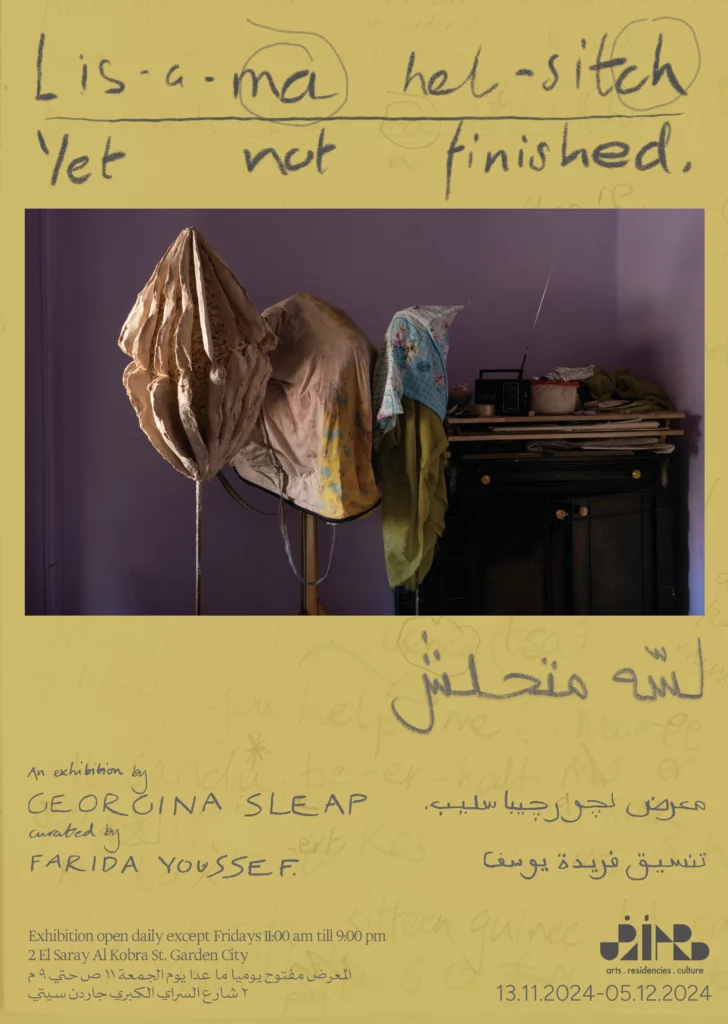
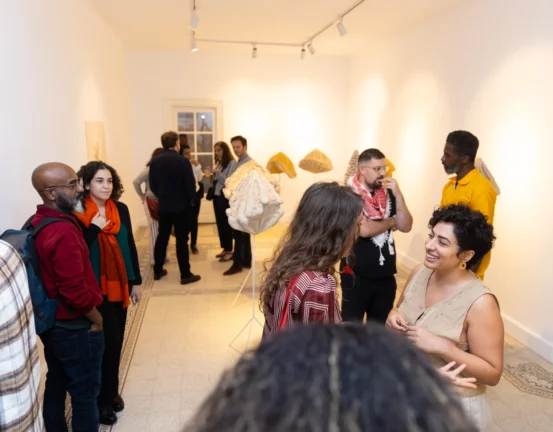
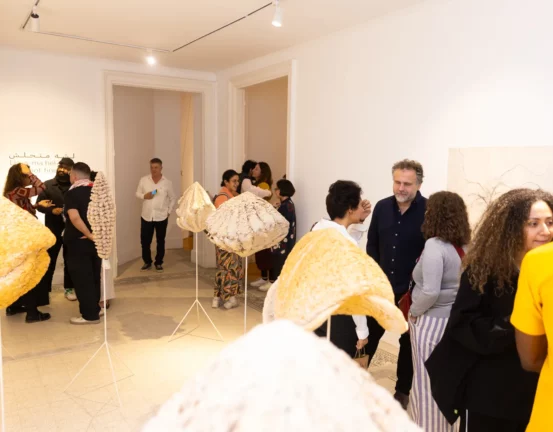
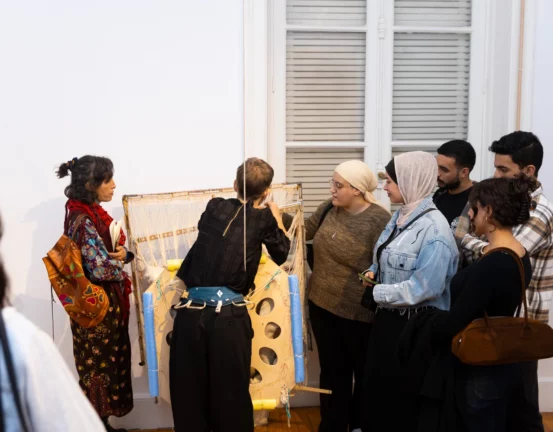
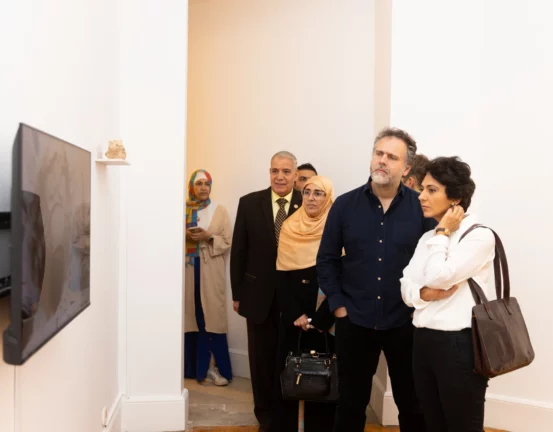
![C0006.MP4_snapshot_05.26_[2024.11.20_13.48.36]](https://ard-art.org/wp-content/uploads/2025/02/C0006.MP4_snapshot_05.26_2024.11.20_13.48.36-553x432.webp)
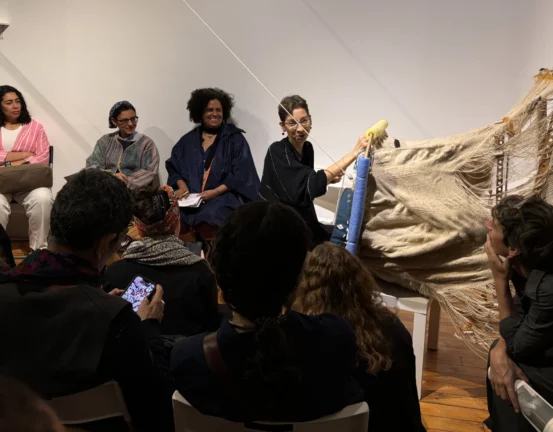
![C0009.MP4_snapshot_14.13_[2024.11.20_15.12.18]](https://ard-art.org/wp-content/uploads/2025/02/C0009.MP4_snapshot_14.13_2024.11.20_15.12.18-553x432.webp)
![C0009.MP4_snapshot_25.58_[2024.11.20_15.22.46]](https://ard-art.org/wp-content/uploads/2025/02/C0009.MP4_snapshot_25.58_2024.11.20_15.22.46-553x432.webp)
![C0009.MP4_snapshot_28.56_[2024.11.20_15.26.48] (1)](https://ard-art.org/wp-content/uploads/2025/02/C0009.MP4_snapshot_28.56_2024.11.20_15.26.48-1-553x432.webp)
